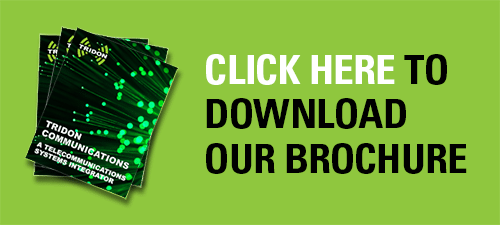Having problems with your two-way radios?
CONTACT US
Two-way radio systems are an ideal tool for easy, instant communication from an outdoor concert at a park to the most rugged industrial environments. They keep teams connected and safe in a wide range of environments, from high-noise construction sites and mines to low-noise environments like hotels and shopping centers.
Though business and industrial environments couldn’t be more different, users of two-way radios in both settings can run into some common issues. Whether you are renting or purchasing two-way radios, it’s important to know how to troubleshoot them and maintain reliable communication. You could save time, money and extend the life of your two-way radio equipment. Most importantly, you can better determine when it’s time to bring them in for repair or replacement.
So, here are four common radio problems, and four easy ways to fix them.
Your Portable Radio Has Poor Reception
Portable radios are meant to be kept upright. If they are lying flat on a surface (like a table or the floor of your vehicle) then barriers like the concrete and steel in the walls can reduce the antenna’s ability to receive a signal by as much as 50%.
The solution is simple: keep your portable radio pointed upright when you’re using it.
Your Portable Radio is Having Trouble Transmitting
The antenna is responsible for transiting and receiving signals. If it’s damaged, communicating can become difficult or even impossible. That means taking care of it is critical to the overall performance of your radio.
Because the antenna sticks out from the radio, it’s one of the first things to get damaged if a radio is dropped on the ground. After a while, kinks and breaks can appear, and the more wear and tear the antenna experiences, the more problems a user will have in communicating. Fortunately, it’s a simple and affordable problem to solve. Bring the radio back to your supplier for servicing and a replacement antenna can be installed.
There is another place where the antenna can get damaged: the connection point with the radio. If your team members regularly pick up two-way radios by the antennae, the connection to the radio can actually be damaged, leading to transmission issues. And because the damage is largely internal, most users don’t realize it’s happened.
This is the kind of problem technicians would be able to catch during regular maintenance and inspection of your radios and it can be repaired. But, to minimize the chances of it happening, remind your crew not to pick radios up by the antennae and not to fold or bend them.
You Hear a Constant Beeping
One of the most common, and annoying, two-way radio problems users report is an incessant beeping sound that just won’t go away. There are a few potential sources for this problem:
- The mic could be in transmit mode.
- You could be on the wrong channel.
- The battery needs to be charged.
The first two are easy to fix. If the radio is stuck in transmit mode, try disconnecting and reconnecting the speaker mic or turning the radio off and then back on. If it’s a channel issue, switch back to the appropriate channel.
Dead batteries aren’t a problem if you have a charger and a spare battery on hand. But sometimes the beeping means that the battery has reached the end of its useful life. Signs of that include the battery’s inability to hold a charge for as long as it used to. If your portable radios are at the end of their battery life, contact your supplier and purchase a replacement. Make sure to bring your dead battery, too, so it can be properly recycled.
You’re Getting Poor Audio Quality from the Speaker
The speaker grill is there to protect the speaker and the microphone from the dust and airborne debris common to industrial environments like construction projects, oil and gas sites, mines, and manufacturing facilities. In those environments, dust and debris like metal filings can actually build up in the speaker grill and cause performance issues with your two-way radio.
There is a possible (and simple) solution: carefully wipe the grill with a dry cloth and audio quality should return to normal. If this doesn’t correct the problem, take the radio to your provider for more thorough inspection.
Basic, routine cleaning and inspection can keep your two-way radios working optimally, but that will only take you so far. Eventually, the radios will need to be inspected and repaired by factory-trained technicians so they can keep your people connected, productive and safe on the job.
Tridon operates a CSA-certified repair facility and we are fully equipped to inspect, maintain and repair two-way radios, accessories and communication infrastructure from manufacturers like Motorola Solutions and JVC Kenwood, along with a range of others. If you have any questions about two-way radio maintenance and repair, contact Tridon and we’d be happy to help.
Tridon is a full solution Telecom Systems Integrator with CSA certification and licensed by APEGA. Our Engineering, Service and Tower Divisions collaborate with customers across Western Canada to build engineered solutions including communications systems design, tower inspections and co-location, wireless broadband, fiber optic cabling, site security, and two-way radio communication.



